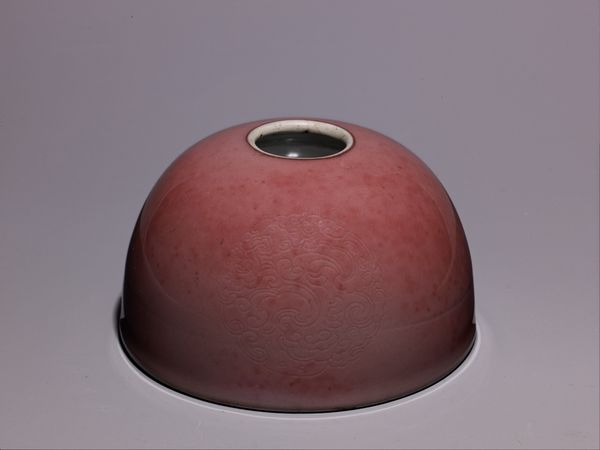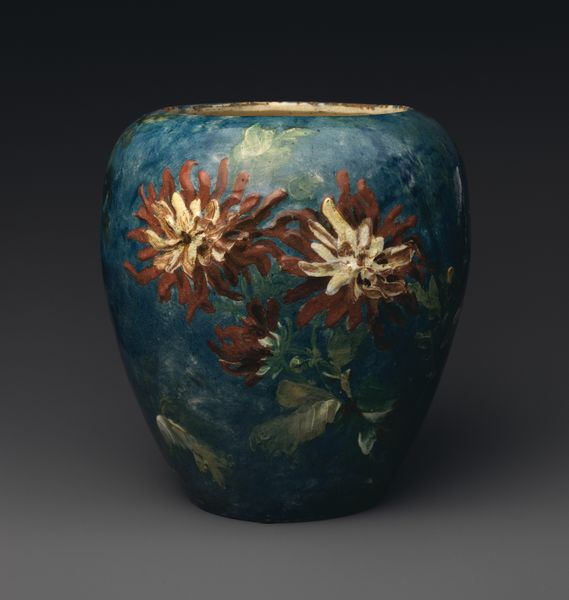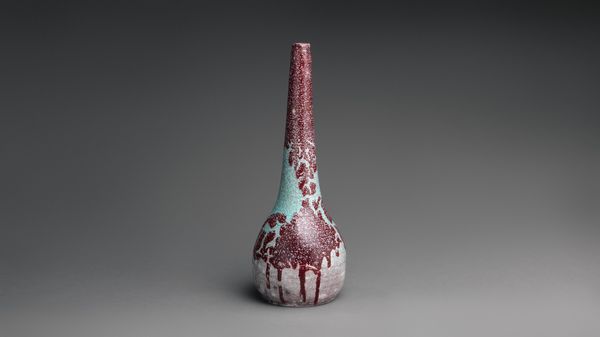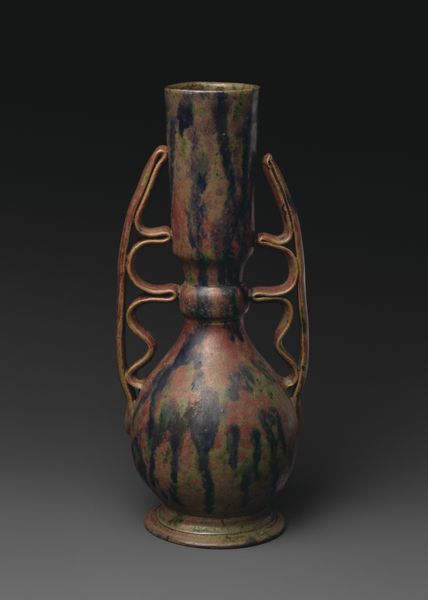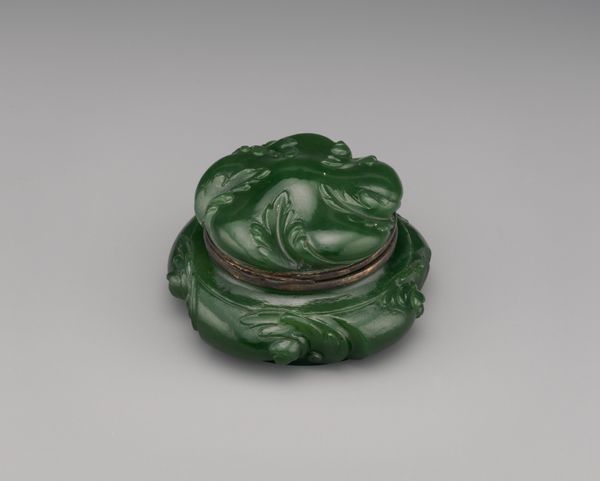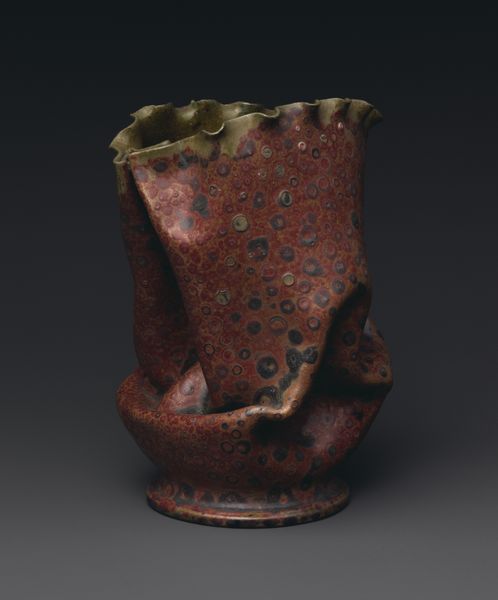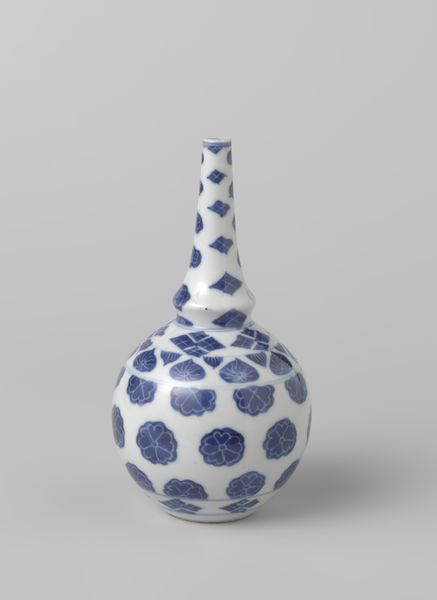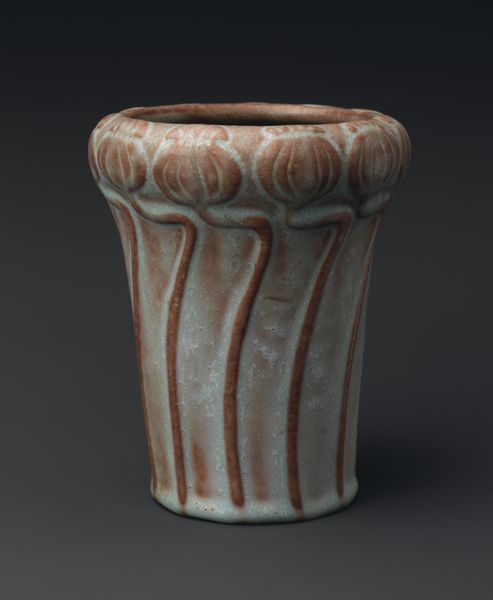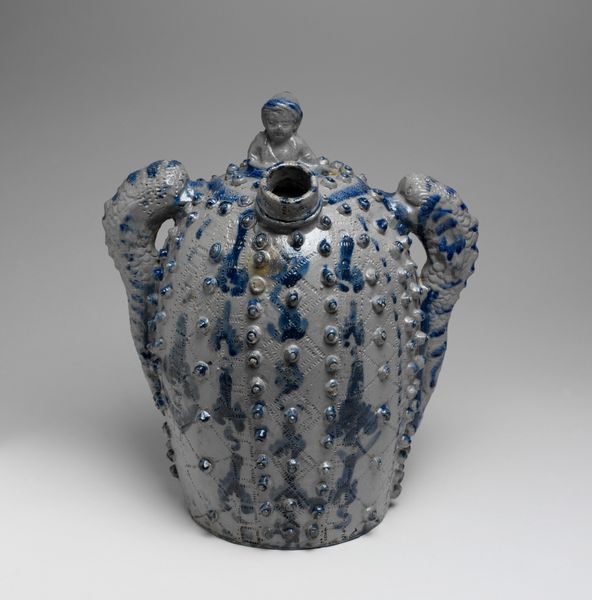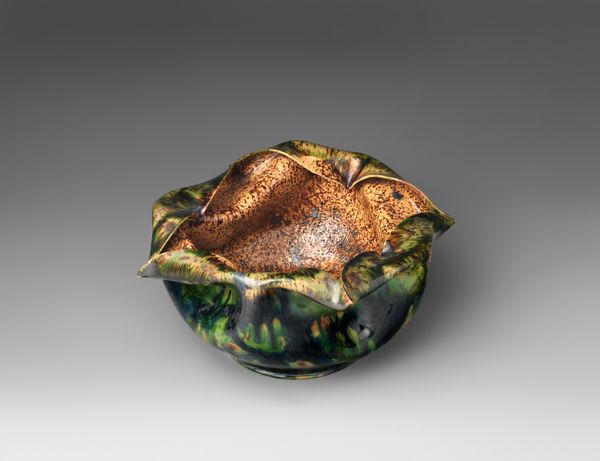
ceramic
#
asian-art
#
ceramic
#
japan
#
orientalism
#
24_meiji-period-1868-1912
#
decorative-art
Dimensions: H. inc. lid 8 1/2 in. (21.6 cm); H. w/o lid 7 3/4 in. (19.7 cm); Diam. 8 1/4 in. (21 cm)
Copyright: Public Domain
Curator: Let's discuss this ceramic pot crafted by Makuzu Kōzan I around 1890, currently held at the Metropolitan Museum of Art. The piece is an evocative example of Meiji-period decorative art and its intersection with wider material and cultural currents in Japan at that time. Editor: My first impression is of a delicate, almost dreamy quality, it feels lighter than I expect ceramic to feel. The soft pinks and swirling patterns have this ethereal beauty. Is that dragons that I am spotting under all of that ornate glaze? Curator: Indeed. What’s compelling to me is the labor and expertise necessary for this level of refinement. The surface design blends abstract cloud-like motifs in red glaze with delicately rendered dragons, achieved through painstaking layering and firing techniques, reflecting a period of technological experimentation in ceramic production. It is Japanese Orientalism at its best. Editor: Those dragon details are so intriguing – almost like whispers beneath the surface. They definitely draw me in to wonder what exactly was happening socially at that moment. Also the juxtaposition of that delicate ethereal pink with what could become menacing dragon is such an interesting one! Curator: The Meiji period was marked by a rapid industrialization and global exchange of technologies and aesthetics, and pieces like this ceramic pot blur lines between high art, craft production and social commentary. Editor: It’s amazing to consider the pot not only as a beautiful art object, but as a testament to cultural exchange and complex processes. It’s grounding to remember there was so much at stake socially when the artist produced something so decorative! Curator: Exactly! The pot acts almost like a material archive of a culture caught between tradition and modernity. I find myself contemplating the implications of the piece far beyond its initial beauty. Editor: Me too. Its decorative exuberance initially seems disarming until you contemplate it's material existence more deeply. What started as a charming decorative art becomes more intriguing as a product of the labor force.
Comments
No comments
Be the first to comment and join the conversation on the ultimate creative platform.
